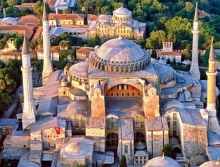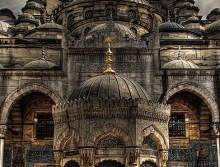Hagia Sofia, Istanbul, Turkey
Hagia Sophia is one of the most important symbols of Istanbul and one of the most special masterpieces in the universal architecture.
Above all, visitors of Istanbul …More
Above all, visitors of Istanbul …More
1 review














